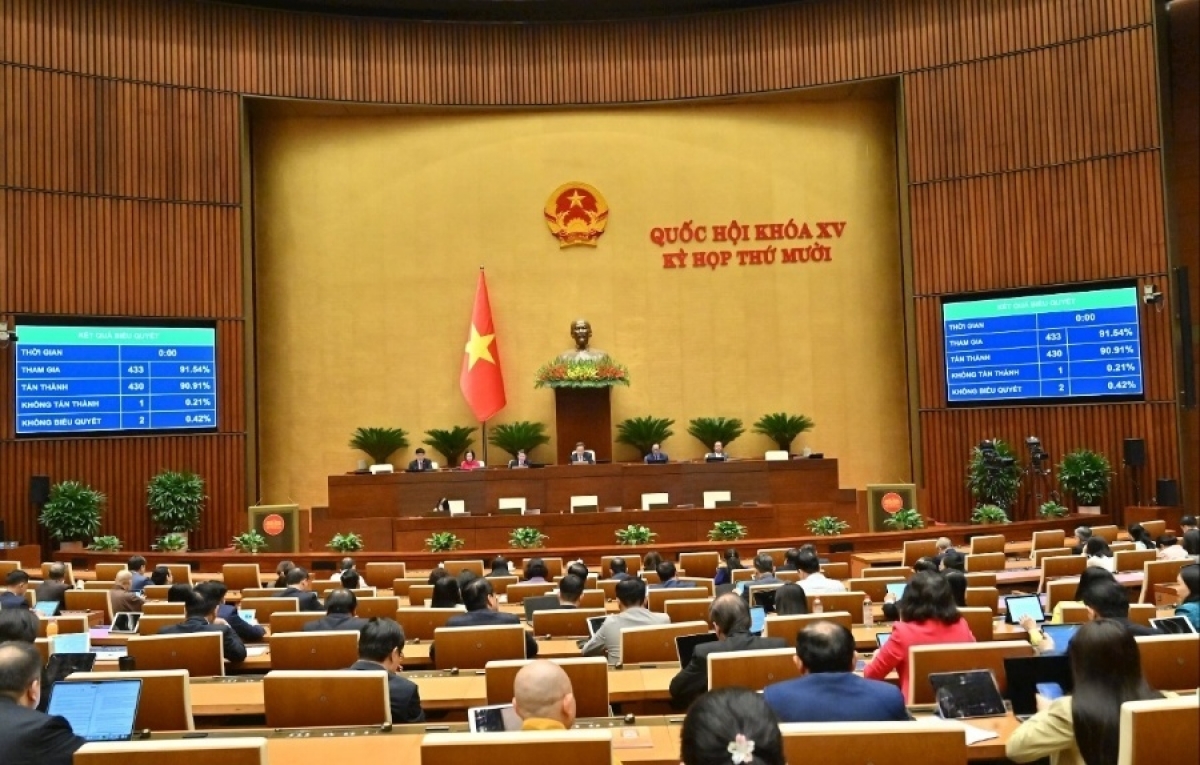INTERNATIONAL INVESTMENT
AND PORTAL
Looking ahead to 2025, what is your forecast for the USD?
Forecasts suggest that US inflation may rise in 2025. If this occurs, the US Fed may increase interest rates to control inflation, which could drive down the USD’s value and potentially push global gold prices higher. However, whether gold prices will reach $3,000 remains uncertain.
While the US election result is a significant factor, it is not the sole driver of the global financial market. We can clearly see the strong growth of the Dow Jones Index following the result, reflecting the market’s excitement. However, beyond that, other factors, such as the attempts by BRICS countries (Brazil, Russia, India, China, and South Africa) to find an alternative have failed, further reinforcing the USD’s position.
Additionally, the USD’s stability is supported by geopolitical factors, as 80 per cent of international trade is still conducted in the US currency.
 Financial expert Nguyen Tri Hieu
Financial expert Nguyen Tri Hieu
What is the most difficult challenge facing USD currently?
One of the most immense challenges for the USD is inflation. The imposition of import tariffs on many countries could lead to higher prices for goods in the global market. As prices rise, this can create pressure that drives inflation higher. High inflation can reduce the value of the USD, as increasing prices erode purchasing power and value.
Additionally, the incoming US president’s potential budget policies of reducing taxes for the financial sector and the wealthy may stimulate the economy, but they could also lead to a higher budget deficit and public debt. With tax cuts, the US government would likely face increased spending, which could lead to issuing more government bonds to raise funds.
To attract bond buyers, the US may need to offer higher interest rates, which could place upward pressure on interest rates both domestically and in global financial markets.
The budget situation and high interest rates could directly impact the monetary policy of the US Federal Reserve. Currently, the US Federal Reserve has maintained such rates to meet the US government’s financial needs, but this could lead to adjustments in monetary policy that affect both the financial markets and exchange rates.
How should Vietnam prepare to cope with the impact of the appreciating USD?
When US interest rates rise, it can increase the value of USD. For Vietnam and other Southeast Asian countries, the appreciation of the USD will lead to a depreciation of local currencies. This depreciation will push up exchange rates, creating both advantages and challenges.
One benefit is that a higher exchange rate can support Vietnam’s exports, as goods will become cheaper for international partners. However, the downside is that a higher exchange rate also raises the cost of imports. As imports become more expensive, the price of imported goods will increase, potentially driving inflation in Vietnam. The higher cost of imports will feed into domestic prices, raising the cost of local products and contributing to inflationary pressures.
Beyond Vietnam, other countries in the region, such as South Korea, may face similar challenges. If the VND continues to depreciate, the State Bank of Vietnam may need to consider adjusting interest rates to stabilise the exchange rate. However, raising interest rates could counteract policies aimed at supporting businesses, as higher borrowing costs would increase the financial burden on companies, impacting their development and production capacity.
What steps should Vietnam take to mitigate the effects of a stronger USD?
To address the impact of the rising USD on Vietnam’s economy, the country needs to develop specific scenarios to prepare for upcoming fluctuations. If the USD continues to appreciate, Vietnam must assess its impact on the exchange rate and adjust monetary policies accordingly, particularly by maintaining exchange rate stability to mitigate inflationary pressures and protect domestic purchasing power.
Additionally, the government may need to consider intervention measures to curb excessive exchange rate increases, preventing negative effects on both exports and imports.
In the opposite scenario, if the USD weakens, Vietnam will have to evaluate its impact on the exchange rate and implement monetary policy adjustments to maintain economic stability. A weaker USD could create better conditions for Vietnamese exports, reduce import costs, and support growth.
However, the depreciation of major currencies may lead to financial volatility, so flexibility in adjusting monetary policies is essential.
Regarding foreign trade, if Donald Trump’s protectionist policies continue to affect Vietnam, especially in the export sector, the government will need to prepare a response plan to minimise negative impacts. This may involve seeking new markets, improving product quality, and promoting diversified foreign trade policies.
Particularly, if Vietnam is placed on the currency manipulation list, it will be essential to develop a strategy to manage international pressure, which requires measures to enhance transparency in Vietnam’s economic and financial policies.
What factors will support the stability of the VND?
An important factor supporting the stability of the VND is exports. Forecasts indicate that Vietnam’s exports will continue to grow robustly, particularly driven by large markets such as the US. Upcoming policies towards China could lead US businesses to relocate to neighbouring countries, including Vietnam, especially in the high-tech and semiconductor sectors. This presents an opportunity for Vietnam to boost exports while reinforcing the stability of VND.
Additionally, remittances play a crucial role in maintaining the VND’s stability. It is forecasted that remittances will not decline in 2024 compared to 2023 and may continue to rise in 2025, helping to improve national reserves and stabilise the exchange rate.
Supportive policies from countries through official development assistance programmes, particularly from Japan, the US, and European nations, will also continue to help Vietnam maintain financial stability and payment capacity in 2025.
 Softened USD exchange rate anticipated at year-end
Softened USD exchange rate anticipated at year-end
The pressure on the VND-USD exchange rate is forecast to remain insignificant, with perhaps a slight retreating for the rest of 2024, according to experts.



















